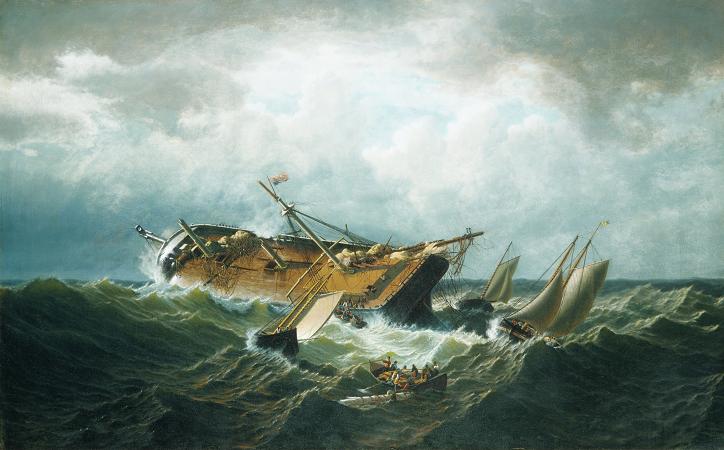Nantucket. Nantucket is an island about 30 miles south from Cape Cod. Together with the small islands of Tuckernuck and Muskeget, it constitutes the Town and County of Nantucket, a combined county/town government in the state of Massachusetts. The name Nantucket is adapted from similar Algonquian names for the island, but is very similar to the endonym of the native Nehantucket tribe that occupied the region at the time of European settlement. Nantucket is a tourist destination and summer colony. Due to tourists and seasonal residents, the population of the island increases to around 80,000 during the summer months. The average sale price for a single-family home was $2.3 million in the first quarter of 2018. The National Park Service cites Nantucket, designated a National Historic Landmark District in 1966, as being the finest surviving architectural and environmental example of a late 18th-and early 19th-century New England seaport town. Nantucket is accessible by boat, ferry, or airplane. For a chronological guide, see Timeline of Nantucket. Clinton Folger, mail carrier for Nantucket, towed his car to the state highway for driving to Siasconset, in observance of an early 20th-century ban on automobiles on town roads. 1870s street scene on Nantucket Nantucket probably takes its name from a Wampanoag word, transliterated variously as natocke, nantaticu, nantican, nautica or natockete, which is part of Wampanoag lore about the creation of Martha's Vineyard and Nantucket. The meaning of the term is uncertain, although according to the Encyclopedia Britannica it may have meant far away island or sandy, sterile soil tempting no one. Wampanoag is an Eastern Algonquian language of southern New England. The Nehantucket were an Algonquin-speaking people of the area. Nantucket's nickname, The Little Grey Lady of the Sea, refers to the island as it appears from the ocean when it is fog-bound. The earliest European settlement in the region was established on the neighboring island of Martha's Vineyard by the English-born merchant Thomas Mayhew. In 1641, Mayhew secured Martha's Vineyard, Nantucket, the Elizabeth Islands, and other islands in the region as a proprietary colony from Sir Ferdinando Gorges and the Earl of Sterling. Mayhew led several families to settle the region, establishing several treaties with the indigenous inhabitants of Nantucket, the Wampanoag people. These treaties helped prevent the region from becoming embroiled in King Philip's War. The growing population of settlers welcomed seasonal groups of other Native American tribes who traveled to the island to fish and later harvest whales that washed up on shore. Nantucket was officially part of Dukes County, New York, until 17 October 1691, when the charter for the newly formed Province of Massachusetts Bay was signed. Following the arrival of the new Royal Governor on 14 May 1692 to effectuate the new government, Nantucket County was partitioned from Dukes County, Massachusetts in 1695. European settlement of Nantucket did not begin in earnest until 1659, when Thomas Mayhew sold nine-tenths of his interest to a group of investors, led by Tristram Coffin, for the sum of thirty pounds also two beaver hats, one for myself, and one for my wife. The nine original purchasers were Tristram Coffin, Peter Coffin, Thomas Macy, Christopher Hussey, Richard Swain, Thomas Barnard, Stephen Greenleaf, John Swain and William Pile. Mayhew and the nine purchasers then each took on partners in the venture. These additional shareholders were Tristram Coffin Junior, James Coffin, John Smith, Robert Pike, Thomas Look, Robert Barnard, Edward Starbuck, Thomas Coleman, John Bishop and Thomas Mayhew Junior. These twenty men and their heirs were the Proprietors. Anxious to add to their number and to induce tradesmen to come to the island, the total number of shares was increased to twenty-seven. The original purchasers needed the assistance of tradesmen who were skilled in the arts of weaving, milling, building and other pursuits and selected men who were given half a share provided that they lived on Nantucket and carried on their trade for at least three years. By 1667, twenty-seven shares had been divided among 31 owners. Seamen and tradesmen who settled in Nantucket included Richard Gardner and Capt. John Gardner, sons of Thomas Gardner. The first settlers focused on farming and raising sheep, but overgrazing and the growing number of farms made these activities untenable, and the islanders soon began turning to the sea for a living. The town on Nantucket Island, when it was still called Sherburne, in 1775 Before 1795, the town on the island was called Sherburne.
more...



